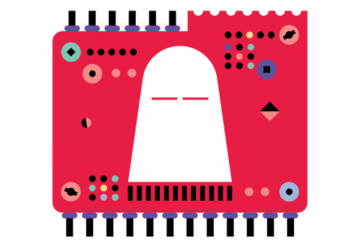It was a technically superior machine to the IBM PCs of the day, but somehow, the growing business market for computers couldn’t tell the difference, so whichever one (60×86 PCs with DOS then Windows) took the early lead in the market just kept growing by the network effect (every business needed a compatible computer with compatible software.)
But for a computer insider, who understood the multi-dimensional technical superiority of the Amiga to DOS and early windows PCs, it almost made you want to cry.

Amiga used the Motorola 68000 line of CPU chips which was a 32-bit processor supporting a uniform unsegmented memory addressing architecture, and a simple uniform elegant orthogonal (RISC, basically) instruction set.
This processor was a marvel of elegant simplicity and power, compared to the monstrously hacked together, weird instruction set, segmented memory architecture 8/16 bit 60×86 chips that IBM DOS/Windows PCs used.
AmigaOS had pre-emptive multi-tasking FFS, back in 1985, when the competition was the primitive DOS operating system with MS-Windows 1.0. Not Even Windows 3.0 (1990), but 1.0. Windows PCs didn’t have comparable multi-tasking ’til 8 years later with the release of Windows NT in 1993.
And lastly the Amiga had a proper and simple to program multi-tasking windowed graphics system that was far superior to the MS-Windows of the day.
Think how much more elegant and simple and powerful the personal computer and business computer software applications of the late 80s and early 90s could have been, if the hardware architecture and OS design pioneered by Amiga had prevailed.
That’s why Amiga is still relevant. It shows us what could have been. It might even have prevented the monstrosity which is MS-Word. As an example. But VHS beat Betamax, and gruesome 60×86 architecture PCs beat elegant 680×0 ones, and somehow, we hobble on.


